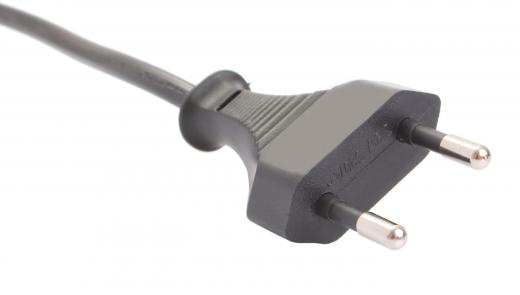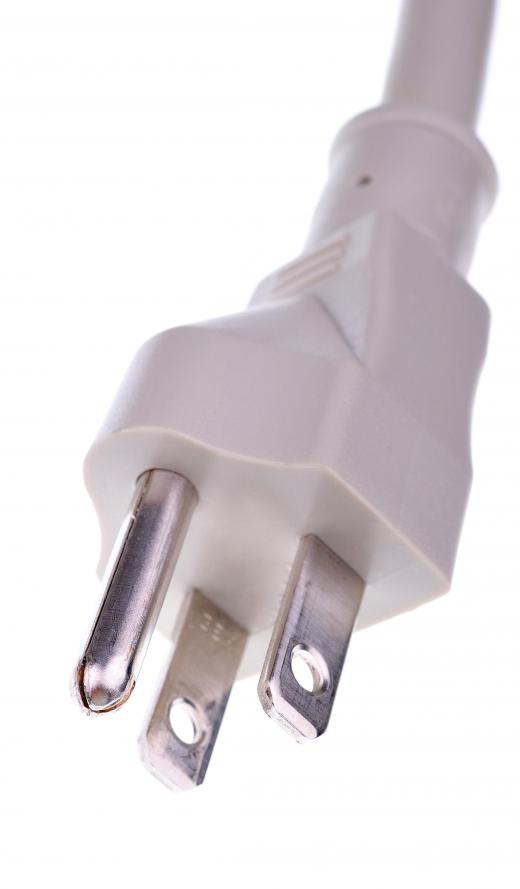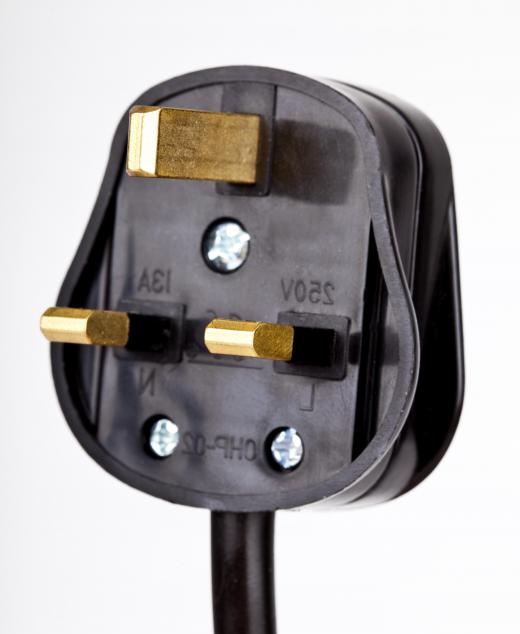An appliance plug is a heavy-duty electrical plug designed for use with appliances. Equipment like stoves, refrigerators, and dryers can use more energy and may pose more of a safety risk to users. Specialized plugs can increase safety and reduce the chance of experiencing problems during routine operations. Replacement plugs and cords are available for appliances with worn electrical wiring. Periodic inspection of wiring is strongly recommended for safety.
These plugs have several traits that distinguish them from other types of plugs. The first is that they are always grounded to increase safety. They include three prongs in a case which is often heavier than normal. Heavier cases and attached cables allow appliance plugs to handle more electrical energy and may confer some heat resistance, which is important with appliances that may get hot, like toasters and ovens.

Design specifications usually create a very snug fit so an appliance plug is unlikely to fall out during use. This can limit the risk of electrical shock or fires, which can be a concern in a variety of settings. The design may also make it difficult to insert the appliance plug upside down or bend the grounding prong to connect with an ungrounded outlet. It may still be possible to use a “cheater,” a connector that plugs into a two socket outlet to convert it to three sockets, but this conversion does not actually ground the outlet and can be very dangerous in some circumstances.

Manufacturers of appliances may provide replacement plugs and wiring to go with specific equipment. In some cases, plugs are easily detached to replace them and their wiring if they start to develop problems. A socket in the appliance itself may be designed to connect with one end of the electrical cable. Other cases may require the services of an electrician to take the appliance apart and insert the new wiring and appliance plug.

Electrical equipment is specifically designed for a common voltage, like 220 on appliance circuits in the United States. In nations which use different voltages, it is important to check imported equipment to determine if it is safe. Simply converting an appliance plug to make it fit into an outlet used in a different country may not be enough. Voltage converters may also be required to step voltage up or down as it enters an appliance to make sure it is not damaged.
Ever since she began contributing to the site several years ago, Mary has embraced the exciting challenge of being a About Mechanics researcher and writer. Mary has a liberal arts degree from Goddard College and spends her free time reading, cooking, and exploring the great outdoors.

